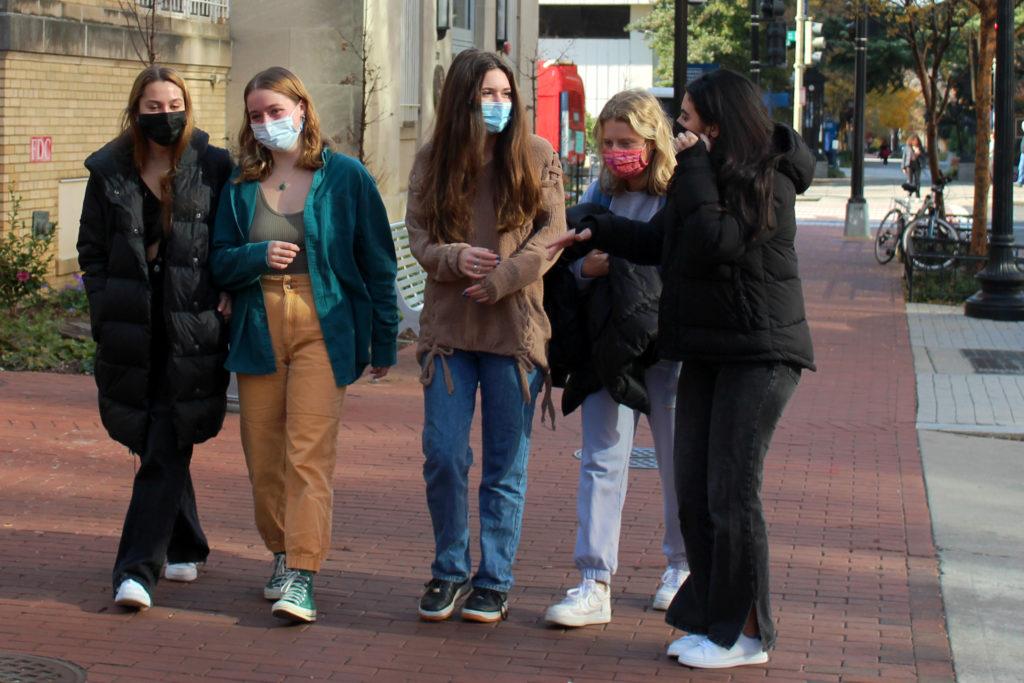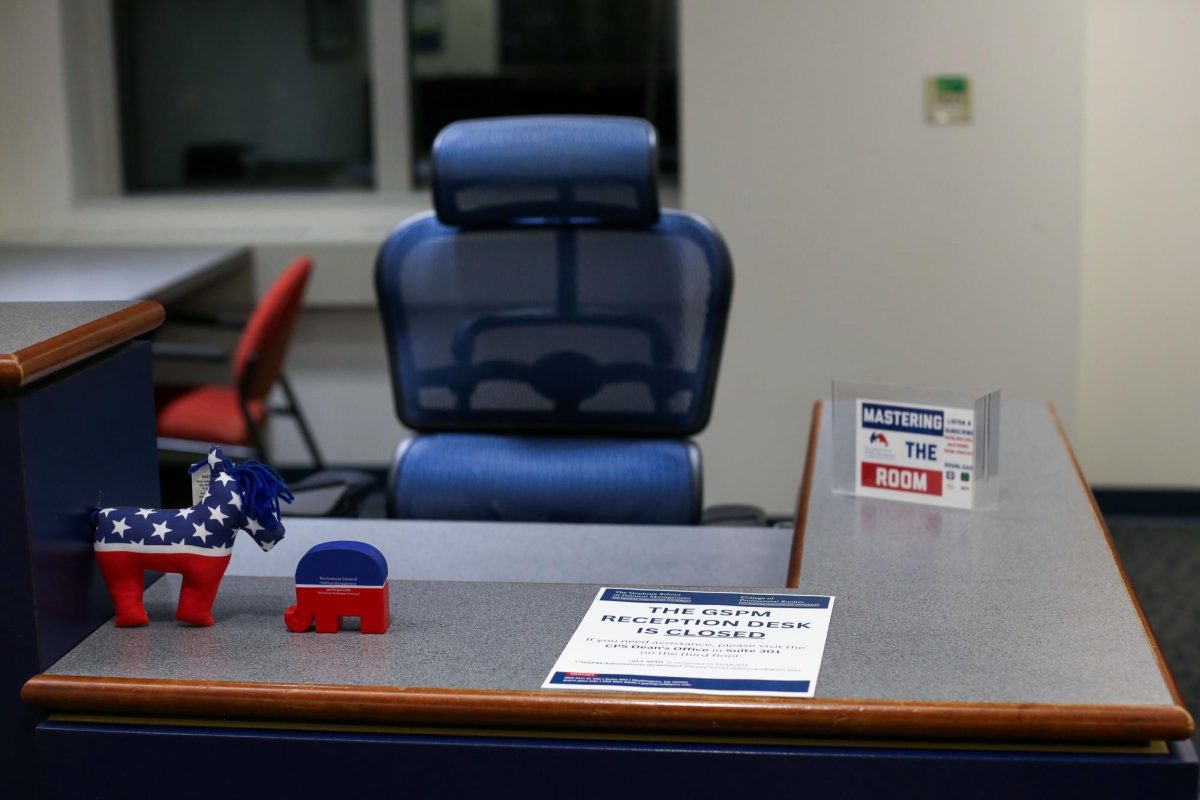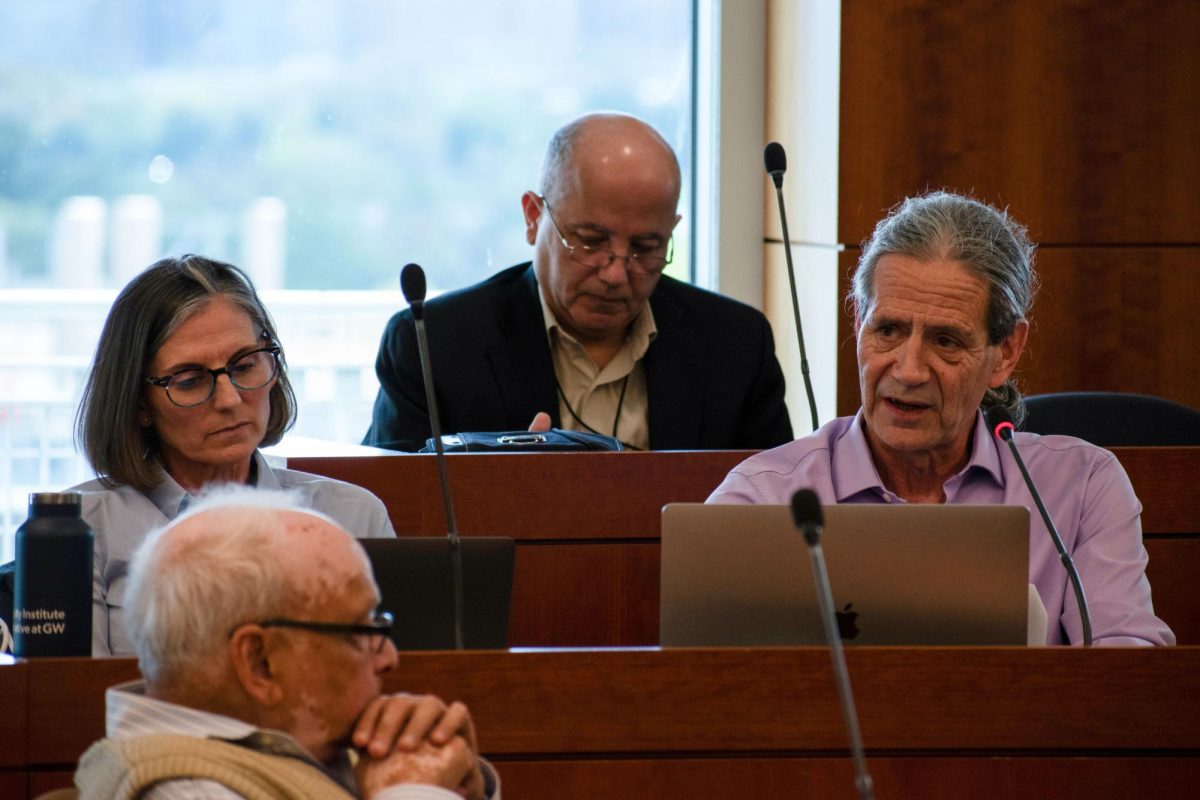Updated: Jan. 24, 2021 at 10:58 a.m.
Officials have spent millions on pandemic-related costs over the past nearly two years, but with the Omicron variant elevating GW’s caseload, administrators now face an added expense of isolation housing for infected students.
Administrators expanded GW’s isolation housing this semester to the Yours Truly Hotel, where infected students isolate for 10 days at GW’s expense. A University spokesperson declined to provide the cost of the 250 hotel beds officials have reserved through Feb. 26, but Jared Abramson, the vice president for financial planning and operations, said the added cost is considerably smaller than the budget impact if students had not returned to campus this semester.
“The incremental expenses this year are far less material compared to the impact of not having a residential student experience early in the pandemic,” he said in an email.
When classes remained online last academic year, the associated loss in housing revenue helped drive a $180 million annual revenue shortfall that led to a swath of budget cuts, like layoffs and a temporary suspension of employee retirement contributions. Financial projections had estimated GW would lose $100 million in housing revenue alone as a result of online operations. GW eventually broke even last year after implementing the financial mitigation.
Abramson said students occupied 7 percent of residence hall space at the start of the 2020-21 academic year, when officials limited on-campus housing opportunities under strict COVID-19 guidelines.
GW later gradually increased its residential population throughout the academic year, housing roughly 500 students in fall 2020 before tripling the residential population to roughly 1,500 students the following semester. Students who tested positive for COVID-19 at the time isolated in vacant residence hall rooms and sometimes shared living units with their roommates who were not infected with the virus.
But with students now back on campus and filling 99.8 percent of housing space at the start of this academic year, officials have resorted this semester to using the hotel space for isolation housing as COVID-19 cases fall from a record high earlier this month. University spokesperson Crystal Nosal said a daily average of roughly 15 to 25 students have entered or exited isolation housing in Yours Truly this semester after five students entered isolation on average each day in the fall.
“The additional hotel rooms are new costs as well as the incremental costs related to the make-up commencement ceremony that was held in the fall on the national mall,” Abramson said.
Even with a comeback in housing revenues this year, Abramson said a continued drop in international student enrollment and COVID-19 testing costs have persisted as “major impacts” on GW’s finances.
GW’s international student enrollment fell by 7.5 percent this fall compared to the previous year, with international students often paying more for college in the United States than domestic students.
Officials have administered roughly 370,000 COVID-19 tests through GW’s in-house lab, with vaccinated students required to test every 15 days to maintain campus access. The testing costs are part of continued pandemic expenses that totaled $17.9 million last fiscal year and were projected to cost $8.4 million this fiscal year, according to the Faculty Senate’s fiscal planning and budget committee.
The expenses’ impact on GW’s budget has been softened by millions in federal aid allocated as part of three pandemic relief packages. Officials used all of the first funding round to provide grants to students but opted to direct a total of $21.6 million from the final two rounds to offset the pandemic-related expenses.
Experts in public health, finance and higher education said the added pandemic-related costs this semester is justified to maintain an on-campus student population.
Daniele Paserman, a professor of economics at Boston University, said among universities’ new expenses this semester include spending on personal protective equipment, like the two free N95 masks per person that the University is providing to the student body.
“As we learn more about the pandemic and sort of more of the population is vaccinated, I think that university administrators are reevaluating the cost and benefits of shutting down things entirely versus taking some calculated risks and trying to keep the community going on as is,” he said.
Paserman said universities can justify the level of risk they take in returning to in-person operations because of the less severe symptoms that people experience when infected with the Omicron variant.
“So unless there is an escalation of the severity of the disease, I think that what most universities will do is to basically try to stay on the course and maintain in-person instruction, and that should sort of minimize the financial hit,” he said.
Pamela Eddy, a professor of higher education at The College of William and Mary, said universities are concerned that a decrease in campus tours because of pandemic-related restrictions will lower enrollment and tuition revenue. GW has paused on-campus tours until at least Jan. 31.
She said many higher education leaders are looking at the Centers for Disease Control and Prevention’s projection of when Omicron will reach its peak to determine when to transition to fully in-person operations.
“The early data show that the symptoms are not as severe for the vaccinated, so the recovery time should be quicker,” she said. “Showing care for students will ultimately build a more committed alumni base, so thinking long-term is important too.”
Sherry Glied, a professor of public service and the dean of the Robert F. Wagner Graduate School of Public Service at New York University, said in light of the recent spike in COVID-19 cases and the spread of the Omicron variant, universities are mainly facing “logistical problems” like giving students isolation space and meals during isolation periods.
But she said officials would likely prefer housing students on campus instead of keeping them home, where they would pose a greater risk of spreading the coronavirus to parents or other family members 50 years or older.
“I think it’s just a terrible idea to send young people home to their elderly parents,” she said. “I think it’s just asking for a public health nightmare.”
Abigail Turner, a professor of medicine and epidemiology at The Ohio State University, said university leaders may spend more this semester to secure isolation housing, clean public spaces and perform contact tracing in light of increased COVID-19 cases recently.
“The big thing about Omicron that is different is the sheer number of cases compared to previous waves,” she said. “So if there are set costs to each positive case, the university is going to end up spending more with Omicron than they would have with waves driven by other variants.”
This post has been updated to correct the following:
The Hatchet misspelled Glied’s last name. The correct spelling is now reflected. We regret this error.








